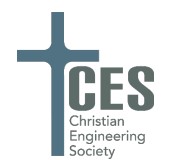Document Type
Paper
Abstract
The College of the Ozarks began a four-year general engineering program in the fall of 2016. This is the first four-year engineering program at a federally-recognized work college. At the College of the Ozarks, all full-time students work in exchange for tuition. The campus is built with student labor, and college functions are largely conducted by students. The College work component provides challenges in areas such as student schedules and workload. However, the graded work experiences also provide opportunities to increase work maturity and ties between the program and the campus community. The regional and economic improvement focus of the College, as well as its mission to provide a Christian education for those found worthy who could not otherwise afford it, results in a unique student population. This paper addresses the implementation of the engineering program and rationale behind it. A desire to minimize impact on other College programs, to align with the College goals, and accommodate desires from regional employers shaped both program content and overall structure. Comparisons to other programs highlight both the challenges and the value of the two-part approach taken to accommodate the general education component, while providing both breadth and opportunities for engineering discipline specific concentrations.
Creative Commons License

This work is licensed under a Creative Commons Attribution-Noncommercial-No Derivative Works 4.0 License.
Copyright
© 2017 Mark Nowack. All rights reserved.
Publication Date
June 2017
An Engineering Program Built Around Work
The College of the Ozarks began a four-year general engineering program in the fall of 2016. This is the first four-year engineering program at a federally-recognized work college. At the College of the Ozarks, all full-time students work in exchange for tuition. The campus is built with student labor, and college functions are largely conducted by students. The College work component provides challenges in areas such as student schedules and workload. However, the graded work experiences also provide opportunities to increase work maturity and ties between the program and the campus community. The regional and economic improvement focus of the College, as well as its mission to provide a Christian education for those found worthy who could not otherwise afford it, results in a unique student population. This paper addresses the implementation of the engineering program and rationale behind it. A desire to minimize impact on other College programs, to align with the College goals, and accommodate desires from regional employers shaped both program content and overall structure. Comparisons to other programs highlight both the challenges and the value of the two-part approach taken to accommodate the general education component, while providing both breadth and opportunities for engineering discipline specific concentrations.

